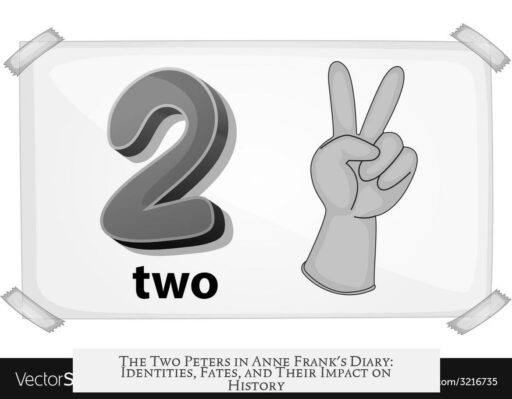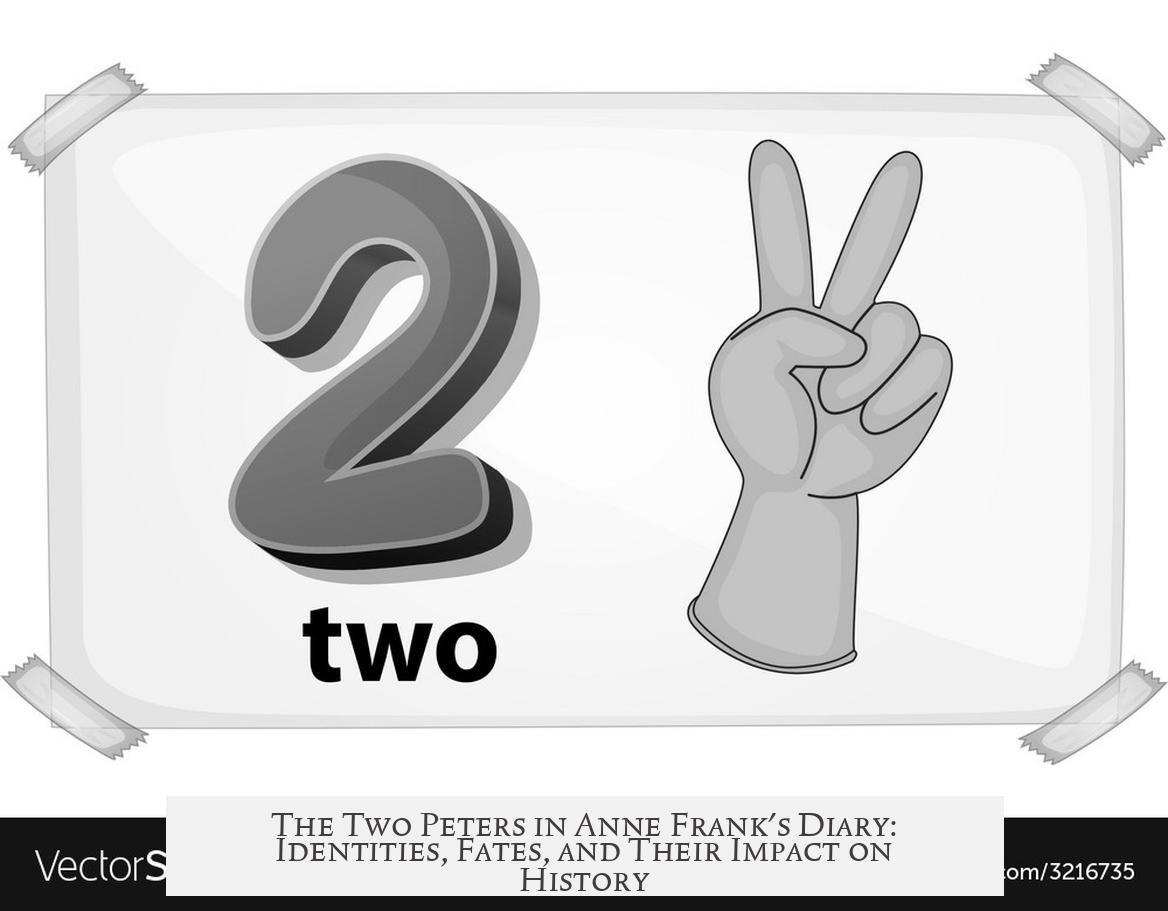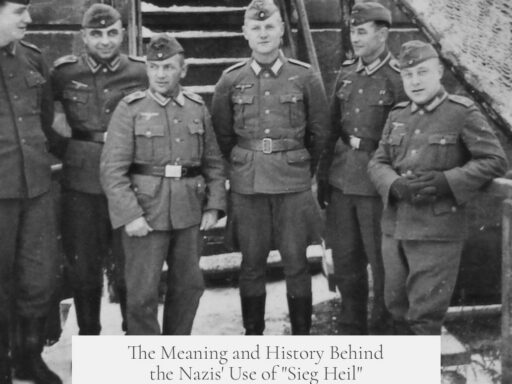Yes, the two Peters mentioned in Anne Frank’s diary are indeed two different people. One is Peter Schiff, whom Anne met at school before going into hiding, and the other is Peter van Pels, who lived with the Frank family in the secret annex.

Peter Schiff appeared in Anne’s diary as “Petel” before the family went into hiding. He was Jewish, about three years older than Anne, and attended Anne’s school. Anne referred to him with affection and hoped Peter van Pels, who came into the picture later, might be a sort of replacement for Schiff. Despite sharing the same first name and similar age, Schiff and van Pels had different backgrounds and roles in Anne’s life.
Peter van Pels was introduced in the diary only after the Frank family entered the secret annex. Also Jewish and around three years older than Anne, van Pels lived in close quarters with Anne and her family. Anne’s diary captures their evolving relationship during their time in hiding.

Regarding their fates, the two Peters met tragic ends during the Holocaust. Peter van Pels was last seen alive by Otto Frank in Auschwitz in January 1945. However, van Pels died in May 1945 during one of the forced death marches between concentration camps. Otto Frank did not witness his death directly.
On the other hand, Peter Schiff’s death details are less precise. He is believed to have died in Auschwitz, although the exact date and circumstances remain unknown. What is confirmed is that he perished in a concentration camp, reflecting the grim reality of many Jews during that period.

| Person | Known As | Relation to Anne | Age | Mentioned in Diary | Death Details |
|---|---|---|---|---|---|
| Peter Schiff | Petel | School acquaintance | ~3 years older | Before hiding | Died in Auschwitz, exact details unknown |
| Peter van Pels | Not given a pseudonym by Anne | Co-inhabitant in secret annex | ~3 years older | After hiding began | Died May 1945 during a death march |
In summary:
- Anne Frank’s diary mentions two distinct Peters: Peter Schiff and Peter van Pels.
- Peter Schiff appeared before hiding; Peter van Pels after the family went into hiding.
- Both were Jewish and approximately three years older than Anne.
- Peter van Pels died during a death march in May 1945.
- Peter Schiff died in Auschwitz; exact details are unknown.
Are the two Peters mentioned in Anne Frank’s diary two different people? And how did each one die?
Yes, the two Peters mentioned in Anne Frank’s diary are indeed two different individuals. Peter Schiff and Peter van Pels are distinct people, each playing unique roles in Anne’s life and in history—and their deaths during the Holocaust unfolded in tragic but separate ways.
Let’s unpack this. Anne Frank, the young diarist whose intimate journal gives us a glimpse into the horrors and humanity of life in hiding, refers to two Peters. But confusingly, she never distinguishes them by different first names in the diary. Curious, isn’t it? This subtle blur has puzzled many readers over the years. But rest assured—they are two different Peters.
So, who were these Peters?
1. Peter Schiff: Anne’s Pre-Hiding Friend
Peter Schiff is the first Peter Anne mentions in her diary. He was a Jewish boy Anne met in school before going into hiding. He’s about three years older than Anne, roughly the same age as her sister Margot. Anne affectionately calls him “Petel” in her diary. This nickname is important—it’s the only time she uses a slightly different name to specify this Peter.
What’s intriguing is that after Anne and her family go into hiding in the secret annex, Peter Schiff disappears from her diary entries. It’s as if he belonged to another chapter of her life—free, outside, and unaware of the grim confinement awaiting her.
Sadly, Peter Schiff’s fate is shrouded in partial mystery. Historical records confirm that he died in a concentration camp, likely Auschwitz. However, the exact time or place remains unknown. He vanished into the chaos and brutality that claimed millions.
2. Peter van Pels: The Peter in the Secret Annex
Enter the second Peter—Peter van Pels. Unlike Schiff, van Pels appears in Anne’s diary only after the Franks go into hiding. He and his family hide alongside the Franks in the secret annex. This Peter is also Jewish, around the same age as Anne’s sister Margot and the other Peter. Anne seems to see him as a kind of replacement for Peter Schiff—someone to fill the void left by her school friend.
Peter van Pels, often just called “Peter” in the diary, became one of Anne’s closest companions during their confinement. Their relationship adds a compelling layer to the diary: Anne’s adolescent anxieties and budding feelings in the tight, tense quarters of hiding.
Names and Confusion
You might wonder why Anne didn’t differentiate the two Peters with unique names. In her diary, pseudonyms were common—mostly to protect identities. Peter Schiff often appears as “Petel,” which lets us know she specifically means him before hiding. But Peter van Pels is always “Peter.” So, if you read “Peter” in the annex, it points to van Pels, not Schiff.
This naming choice probably reflects Anne’s mindset and context at the time. Before hiding, the outside world—friends like Schiff—were normal, familiar. In hiding, Peter van Pels represented a new reality, new emotions.
The Tragic Ends: How Each Peter Died
We’ve addressed who they were, but what about their ends? The Holocaust spared no one, and these two Peters met terrible fates.
- Peter van Pels’ Death – The last time Otto Frank, Anne’s father, saw Peter van Pels alive was in January 1945 at Auschwitz concentration camp. What happened after remains horrific and heartbreaking.
- Peter van Pels died during a death march in May 1945. These forced marches moved prisoners between camps as the Nazis fled advancing Allied forces. Death marches were brutal, with starvation, exhaustion, and killing rampant. Peter’s death at this time highlights the inhuman cruelty suffered even near the war’s end.
- Peter Schiff’s Death – Peter Schiff’s exact death details are murkier. Records indicate he perished in Auschwitz or another concentration camp. Still, the exact date and circumstances are unknown. This uncertainty is a stark reminder of lives lost without trace during the Holocaust.
Why Does This Matter?
Anne Frank’s diary isn’t just a story of one girl—it’s a tapestry of lives intersecting at a dark historical crossroads. Recognizing that the two Peters are different individuals deepens our understanding of Anne’s emotional world. It shows the shifting nature of her relationships and the harsh reality of changing times.
Both Peters were about the same age, Jewish, and important to Anne. But their paths and stories diverged sharply—one a school friend from the outside world, the other a fellow secret annex dweller. Each faced death in unimaginable ways, underscoring the personal tragedies behind the history.
Lessons From Two Peters
What can today’s readers learn? For one, paying attention to details—like the subtle “Petel” nickname—can clarify confusion.
Also, understanding Anne’s diary requires sensitivity to her context: fear, hope, loneliness, and teenage heartache in hiding. The two Peters symbolize two chapters in this experience.
And finally, their stories remind us how many separate tales of suffering and loss the Holocaust contains. Each victim had a full life before the nightmare.
Wrapping It Up
So, to recap: Anne Frank’s two Peters—Peter Schiff and Peter van Pels—are different individuals. Schiff was Anne’s school friend before hiding, who died in Auschwitz under unknown circumstances. Van Pels was the annex companion, who died in May 1945 during a death march after being last seen in Auschwitz.
In a way, these two Peters bracket Anne’s tragic journey: the adolescent memories before hiding and the grim realities inside the annex. Their stories help us see Anne not just as a symbol, but as a girl connecting with friends like any other—friends who shared her fate in different but heartbreaking ways.
Next time you read Anne’s diary, remember: Behind each name lies a person with a unique story, full of hopes, fears, and humanity—lost to us now, but never forgotten.




